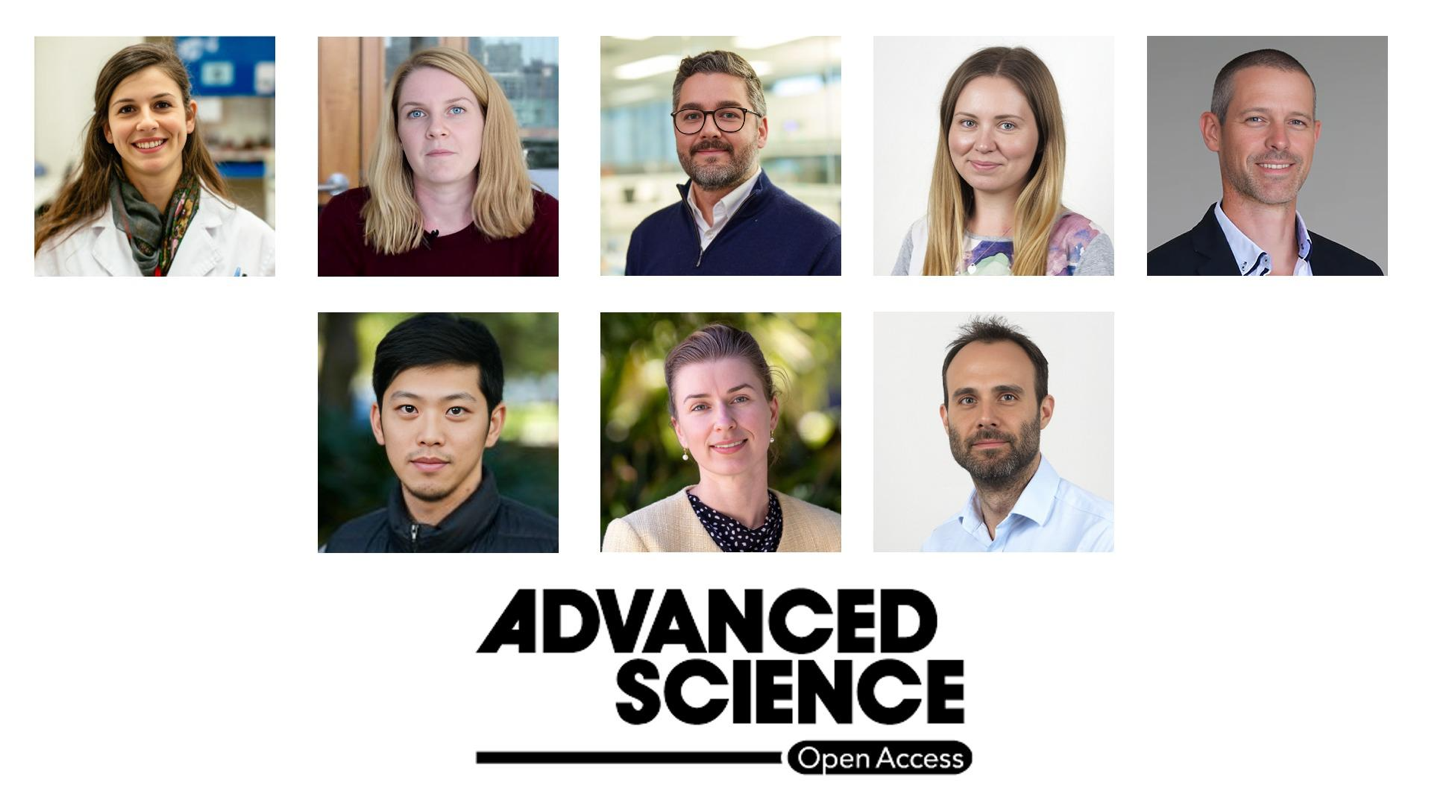How Tumor Biomechanics Shape Metastatic Dissemination of Triple Negative Breast Cancer
Authors: Elysse C. Filipe,* Sipiththa Velayuthar, Ashleigh Philp, Max Nobis, Sharissa L. Latham, Amelia L. Parker, Kendelle J. Murphy, Kaitlin Wyllie, Gretel S. Major, Osvaldo Contreras, Ellie T. Y. Mok, Ronaldo F. Enriquez, Suzanne McGowan, Kristen Feher, Lake-Ee Quek, Sarah E. Hancock, Michelle Yam, Emmi Tran, Yordanos F. I. Setargew, Joanna N. Skhinas, Jessica L. Chitty, Monica Phimmachanh, Jeremy Z. R. Han, Antonia L. Cadell, Michael Papanicolaou, Hadi Mahmodi, Beata Kiedik, Simon Junankar, Samuel E. Ross, Natasha Lam, Rhiannon Coulson, Jessica Yang, Anaiis Zaratzian, Andrew M. Da Silva, Michael Tayao, Ian L. Chin, Aurélie Cazet, Maya Kansara, Davendra Segara, Andrew Parker, Andrew J. Hoy, Richard P. Harvey, Ozren Bogdanovic, Paul Timpson, David R. Croucher, Elgene Lim, Alexander Swarbrick, Jeff Holst, Nigel Turner, Yu Suk Choi, Irina V. Kabakova, Andrew Philp, and Thomas R. Cox*
Published in Advanced Science, on April 11 2024
Introduction
The primary tumor microenvironment plays a crucial role in cancer progression, with tumor biomechanics known to influence cellular behavior significantly. While the effects of increased tumor stiffness on cancer cells have been extensively studied, the impact of softer tumor microenvironments on metastatic dissemination remains underexplored. This study aimed to investigate how the biomechanical properties of the primary tumor affect the various stages of the metastatic cascade in triple-negative breast cancer (TNBC).
Experimental Model Overview
The study employed collagen I functionalized polyacrylamide hydrogels with tunable stiffness to simulate the biomechanical properties of breast tumors. Techniques such as atomic force microscopy and Brillouin microscopy quantified the mechanical characteristics of these hydrogels, linking them to cellular behavior changes in TNBC cells.
Key experimental approaches included
- Cellular Response Evaluation: Observations on how TNBC cells adapt to soft versus stiff microenvironments, focusing on cell viability, proliferation, and metabolic responses.
- Metabolic Profiling: Utilization of Seahorse XF analyzers allowed for the assessment of how mechanical environments influence cellular respiration and metabolic flexibility, particularly regarding glucose and fatty acid utilization.
- In Vivo Validation: TNBC cells preconditioned in these varied stiffness settings were tested in mouse models to examine their metastatic potential and ability to colonize distant sites.
What We Learned
Using in vitro models that recapitulate the range of stiffness found within breast tumors, the researchers found that cancer cells exposed to softer microenvironments exhibited enhanced survival and increased metastatic colonization of secondary sites compared to those exposed to stiffer environments. This was driven by the increased metabolism of fatty acids within the soft-primed TNBC cells, leading to greater metabolic flexibility and improved ability to withstand stress during metastatic dissemination.
Key Highlights:
- Soft-primed TNBC cells showed a 1.5-fold increase in the number of metastatic lesions in the lungs compared to stiff-primed cells in an in vivo model.
- Soft-primed cells exhibited increased intracellular glucose levels, enhanced mitochondrial activity, and upregulated fatty acid oxidation, all of which contributed to their improved survival under stress conditions.
- Blocking β1 integrin-mediated mechanosensing in stiff-primed cells caused them to adopt a soft-primed metabolic profile, enhancing their metastatic potential both in vitro and in vivo.
Key Takeaway Messages:
- The biomechanical properties of the primary tumor microenvironment critically influence the metastatic capacity of TNBC cells, with softer environments priming cells for enhanced survival and increased metastatic colonization.
- This is driven by a metabolic reprogramming towards increased fatty acid oxidation, which provides soft-primed cells with greater metabolic flexibility and survival advantages during the metastatic process.
- Targeting the biomechanical sensing mechanisms, such as β1 integrin, may be a promising strategy to disrupt the pro-metastatic effects of the softer tumor microenvironment.
Summary by Amalya Sargsyan, MD
About OncoDaily
OncoDaily was founded in 2023. It is a US-based oncology media platform, which features the latest news, insights, and patient stories from the world of oncology. Within a short period of time it became one of the leading oncology media platforms globally.
OncoDaily gathers content from various sources, including social media posts from renowned oncologists from all over the world, news from oncology societies and cancer centers, patient and survivor stories, and career-related information for professionals.
The mission of OncoDaily is to empower patients, survivors, and professionals with the knowledge and inspiration they need to fight cancer. The motto of OncoDaily is “Cancer doesn’t take a day off – neither do we.”
